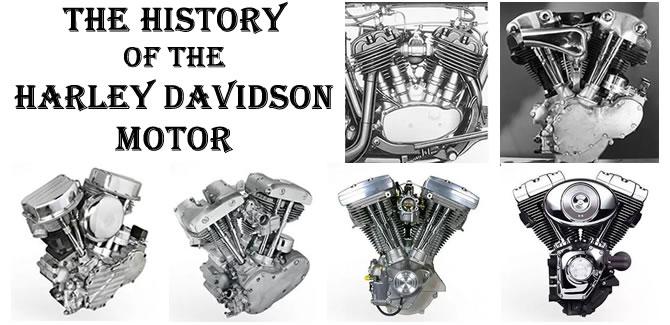
Harley-Davidson has always been known for its distinctive V-Twin 2 cylinder motors. Here is a history of the different motors Harley-Davidson has used in their motorcycles over the last 100+ years...
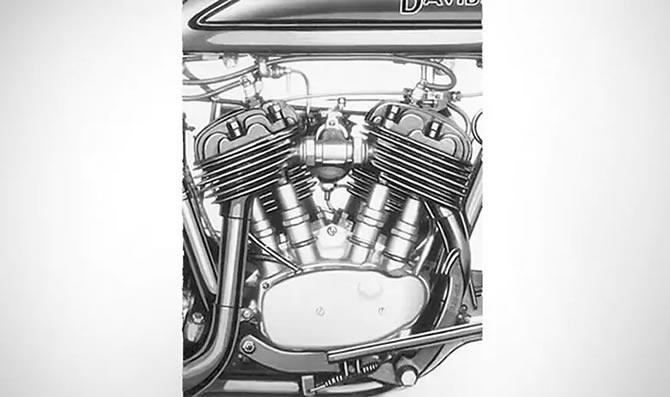
Flathead: 1909-1936
The Flathead was named because of the tell-tail flat vented tops that are recognizable at the top of each cylinder head. This is the famous motor that propelled the Harley-Davidson to victory after victory in the motorcycle races of the twenties.
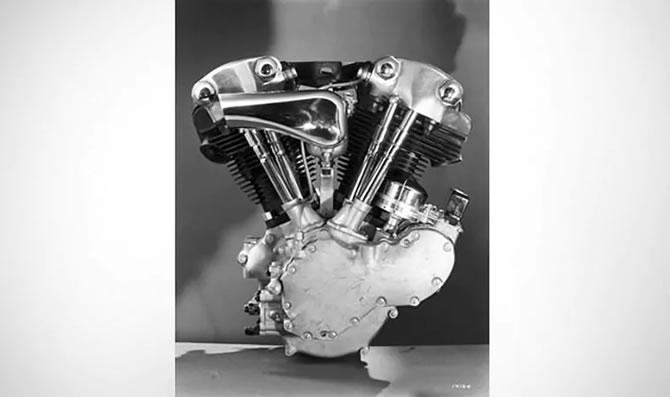
Knucklehead: 1936-1947
On the eve of WW2, Harley-Davidson introduced an overhead-valve V-twin with knuckly looking valve covers. The new motor, affectionately named the "Knucklehead", performed well both for HD and for America in the difficult years to come.
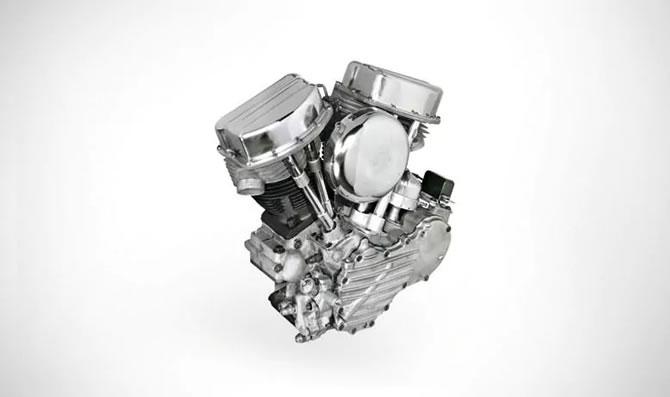
Panhead: 1948-1965
WIth improvements to engine design, like hydraulic valve lifters that supplied oil through rocker arms, the Panhead hit the market in 1948. It was named for the pan-like valve covers replacing the knuckle covers.
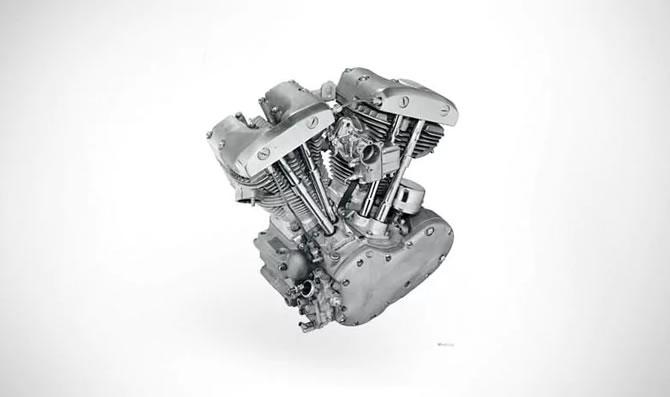
Shovelhead: 1966-1984
By 1966 the Panhead underwent still more improvements. The most noticeable being the distinctive enclosed cylinder head in a sleek, slightly curved top. At a glance this looks unmistakably like a shovel with the pushrods tubes resembling the handle of a shovel, and the shovel itself.
The Pan-Shovel was first made in 1966. Basically it was a Panhead bottom end with a Shovelhead top end made from 1966-1969. The full fledged Shovelhead ("Cone" Shovel) began production in 1970.
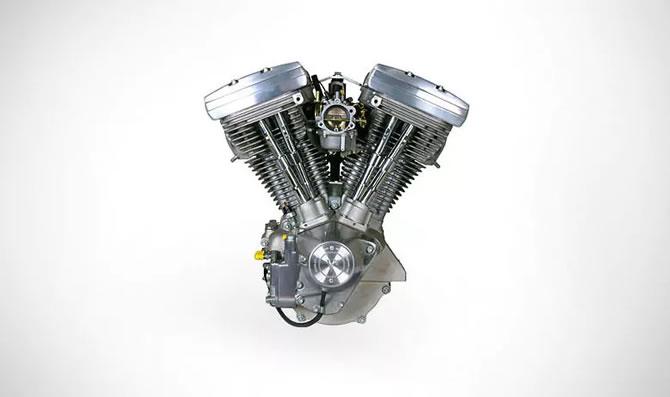
Evolution: 1984-1999
In 1984 on the heels of a bold employee buyout of AMF, the motor company went public and introduced its now famous redesign of the V-twin. This radical new design utilized styled square blocks to house the valve train. This motor, revered as the Evolution engine is known amongst Harley enthusiasts as "the Blockhead".
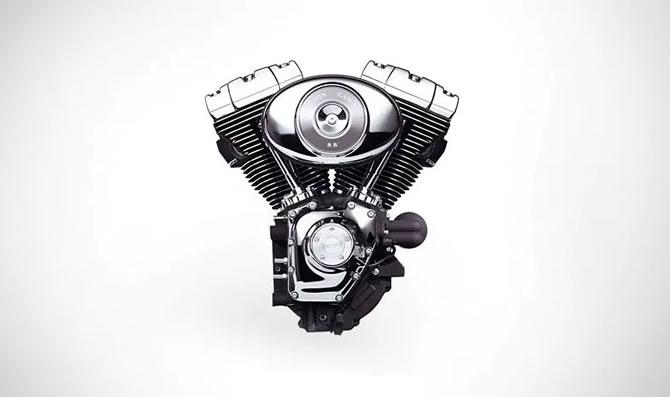
The Twin Cam: 1999 - Present
Twin Cam 88: 1999
With numerous American motorcycle manufacturers trying to surface and resurface, Harley-Davidson introduces its most revolutionary engine yet. The Twin Cam 88 gets its name from its two cams versus the single cam in all its ancestors. This motor also goes by the nickname "Fathead" for just exactly that, bigger heads. With this new engine design Harley-Davison puts one more notch in its insurance for success.
Twin Cam 96: 2007
With an increased demand for a more powerful engine, Harley increased the size of their famous twin cam engine from 88 ci to 96 ci.
Twin Cam 103: 2011
Harley increases the power again this time to 103 ci. As of 2011 the 103 motor will be stock in all Harley Davidson Touring model motorcycles. The new 103 ci engine also includes an integrated Oil-Cooler.
Milwaukee-Eight 107: 2017
Harley increases the power again this time to 107 ci. These engines differ from the traditional Harley Big Twin engines in that there are four valves per cylinder, totaling eight valves, hence the name. It also marked a return to the single-camshaft configuration as used on previous Harley Big Twin Engines from 1936 to 1999. In addition, the engines all have internal counterbalancers, whereas Twin Cams were counterbalanced only on Softail models, where the engine was rigidly mounted.
Revolution® Max V-Twin: 2021
Representing a new generation of Harley-Davidson power, the Revolution® Max engine family was launched in the Pan America® and Sportster® S models. This 60-degree liquid-cooled V-Twin was designed to function as a stressed member of the motorcycle chassis to reduce overall motorcycle weight. The Revolution Max V-Twin engine is optimized for light weight and a broad powerband that builds to a rush of high-RPM power. It features double overhead camshafts, four-valve cylinder heads, variable valve timing, dual downdraft throttle bodies and is counter balanced to reduce vibration. The engine and six-speed transmission share a common case. The Revolution® Max is offered with 1250cc and 975cc displacement.